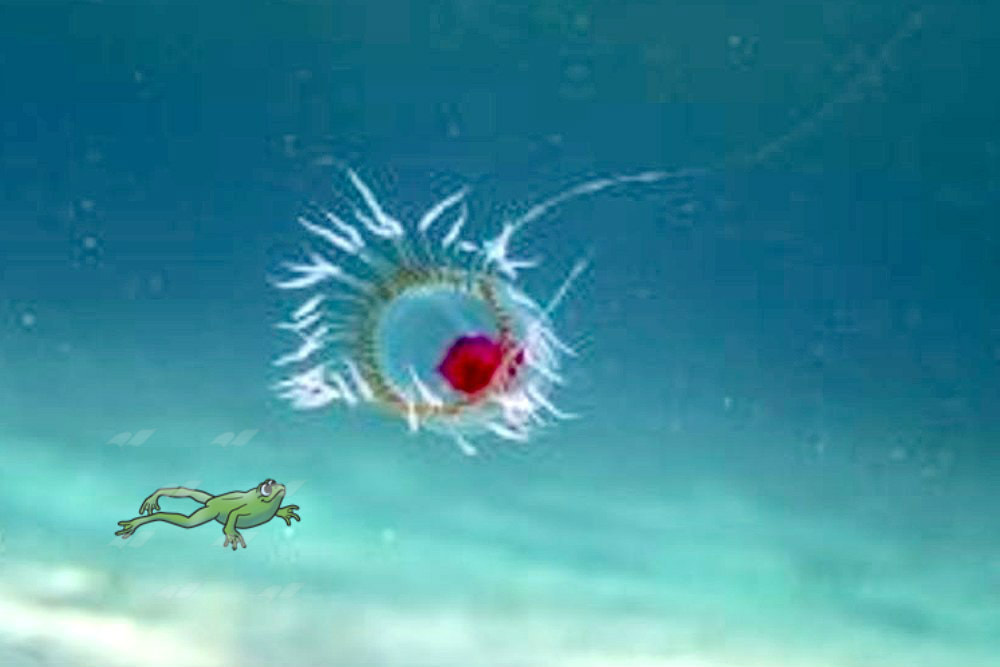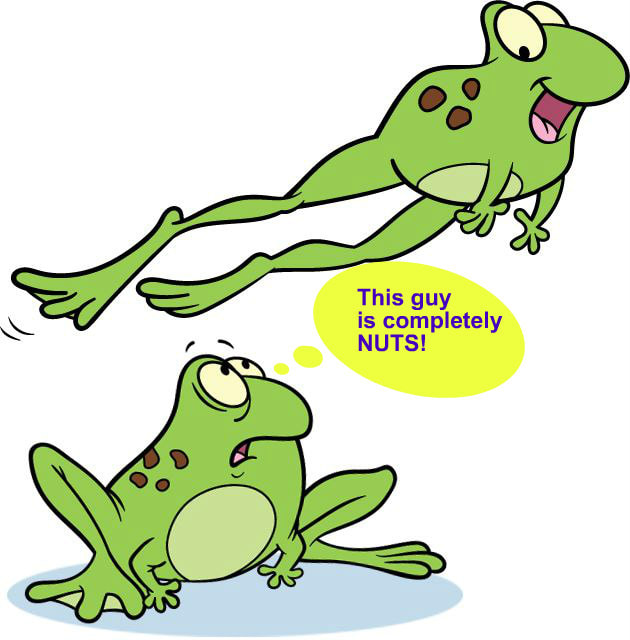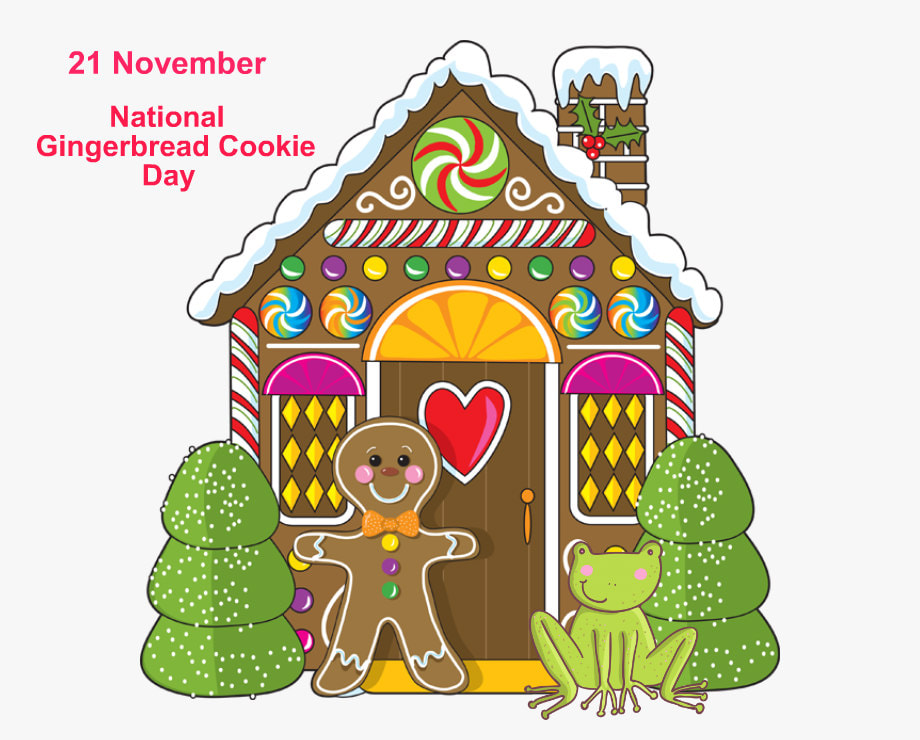As the tea was steeping, I set the table. Just as I was dishing up the food, Dharma arrived, hungry as usual. "Mmmmm. Something smells good, my boy! I'm famished!" He sat down, I poured the tea and he helped himself to a large portion of food. After taking a few bites and a few sips of the still-steaming tea, he asked, "Irwin, do you what today is?" I had to admit, I didn't. "It's Wednesday, Sir." was the only answer I could come up with. "Well, it is that, but it is also World Kindness Day. I do think it's a pity that we need to have a day to remind us to be kind to one another but, that said, it's good that we have this reminder. The world needs more kindness every day." "Is that what my lesson is on?" "Yes, Irwin. It is. A frog's kind word does more than a fat fly for kindness is food for the soul."
My curiosity was peaked so I, of course, wanted to learn more about how the power of kindness impacts us as well as others. What follows is the synopsis of my dear teacher's lesson.
Dharma asked me to think back on a time when someone was kind to me. How did I feel? Then he asked me to think back to a time when I was kind to someone else? How did that feel? He encouraged me to look into my heart and notice the feelings. I encourage you, dear reader, to ask yourself these two questions and look into your own heart. Notice that warm fuzzy feeling? That is kindness feeding your inner being. Feels pretty good, doesn't it?
Kindness makes a lasting impression on both the receiver as well as the bestower of that kindness. While Dharma stopped to eat a little more of his breakfast, I remembered a quote by David Orr, a professor of Environmental Studies and Politics, "The plain fact is that the planet does not need more successful people. But it does desperately need more peacemakers, healers, restorers, storytellers, and lovers of every kind. It needs people who live well in their places. It needs people of moral courage willing to join the fight to make the world habitable and humane. And these qualities have little to do with success as we have defined it.”
Dharma explained that kindness is part of the human (and frog) existence. From birth, and even before, infants depend on their caregivers to provide for their needs. Therefore, kindness is "sewn into the fabric of human DNA." And everyone has an opinion about how best to improve the world but, it turns out, few want to practice that kindness in their own backyard. World peace won't be achieved by overthrowing bad governments. "It will happen when humanity raises its consciousness beyond that of fear and hatred."
Then, Dharma said something that hit home. "Kindness is not something that demands hard work. It originates from the simple act of doing not harming others." That's it. That is the very simple key to making life better for everyone; do no harm. Three small words and eight little letters. And all it involves is judging less. "Irwin, the ego is quick to judge when it is victimized and hurt, so it retaliates in revenge. Kindness, however, bites its tongue. It does not seek to be right but to preserve peace of mind." I thought to myself, "How easy is that?" Difficult, at first, to be sure. The ego is powerful. But with a small amount of training, it can become our servant and not our master.
If you still need a few more reasons why you need to be kinder, try these out. "Kindness has many benefits including increased happiness and a healthy heart. It slows down the aging process and improves relationships and connections, which indirectly boosts your health." So, in essence, kindness not only feels good, it DOES good, as well! And kindness benefits the giver more than it does the receiver. I think that's true of any gift we give.
Some folks believe that being kind shows weakness. In reality, the opposite is true. "It’s important to delineate between kindness and being a doormat to others. You can be kind and assertive when others attempt to profit from your kindness. We should in no way undermine our self-worth at the expense of others, but simply practice kindness while upholding your integrity." "Dharma," I asked, "How will I know if I'm standing up for myself or if I am being abusive to someone?" "That's an excellent question, my boy! An important lesson in kindness involves asking yourself: ‘How would I handle being the recipient of this?’ If it doesn’t feel good avoid the behavior."
My lesson this morning flew by and before we knew it, Dharma was running late to his next appointment. But before he left, he gave me this wise advice. "Incorporate the smallest acts of kindness into your everyday life and notice the ripple effects. The Butterfly Effect in Chaos Theory asserts that a tiny event in one region of the globe can have a substantial effect somewhere else. Always remember that, Tadpole. Happy World Kindness Day." "I promise I'll remember that, Sir. And Happy World Kindness day to you. Thank you for this most inspiring lesson."
I have some sad news to share. Due to a lack of financial resources, today will be the end of my blog, as well as my website. For over 4 years, it's been both a pleasure and an honor to write for you. It is my fondest hope that I have brought you a little joy as well as a little knowledge with the words that I've written here. You all have been more than kind to me and I think it's fitting that I must end my work today on World Kindness Day. So from me and Dharma, Little brother, Quigley, and all the rest of us here in Land of Lily Pad, for the last time, I wish you a good day and
PEACE.










 RSS Feed
RSS Feed